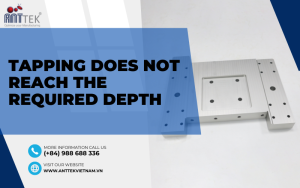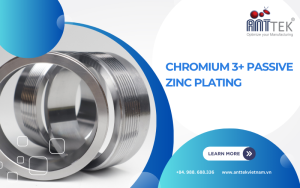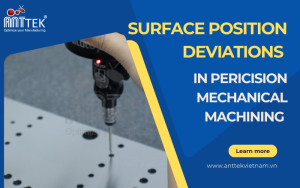Machining machine parts: The foundation of modern manufacturing
Machining machine parts is a crucial process in the mechanical engineering industry, where machine components are manufactured from raw materials into finished products with high precision. This process plays a key role in creating the essential parts and equipment needed for various sectors such as automotive, aerospace, and electronics.
Methods of Machining Machine Parts
There are several methods of machining machine parts, each with its own advantages and disadvantages, depending on the technical requirements and type of material used. Some common methods include:
Turning
– Turning is a machining process that uses a lathe to remove material from the workpiece by rotating the workpiece and cutting away excess material with a turning tool.
– This method is suitable for producing round and cylindrical parts with high precision.
Milling
– Milling is a process that uses a milling machine and milling cutters to remove material from the workpiece through various movements of the cutter and workpiece.
– This method can create flat surfaces, grooves, and other complex shapes.
Drilling
– Drilling is the process of creating holes in the workpiece by using a rotating drill bit.
– This method is often used to create holes or machine holes with different diameters.
Grinding
– Grinding is the process of using a grinding wheel to remove material from the surface of the workpiece, creating a smooth and highly precise surface.
– This method is suitable for finishing surfaces and machining parts that require high precision.
Benefits of Machining Machine Parts
High Precision
Machining machine parts allows the creation of components with high precision, ensuring perfect fitting and assembly of parts. This is especially important in industries that require strict quality standards such as aerospace and healthcare.
Flexibility
With various machining methods, this process can produce parts with diverse shapes and sizes, suitable for different applications. This helps manufacturers meet the diverse needs of the market and customers.
Increased Productivity
Using modern machinery and technology in machining machine parts helps increase productivity, reduce production time, and lower labor costs. This helps businesses improve production efficiency and market competitiveness.
Challenges
High Technical Requirements
Machining machine parts requires high technical knowledge and expertise, as well as an understanding of different materials and machinery. This necessitates businesses to invest in training and developing a skilled workforce.
Initial Investment Costs
To achieve high precision in machining machine parts, businesses need to invest in modern machinery and technology, which can entail high initial investment costs. This is a challenge for small and medium-sized enterprises.
Maintenance and Repair
Machinery used in machining requires regular maintenance and repair to ensure stable operation and avoid unwanted breakdowns. This is not only costly but also requires technical knowledge and understanding of the machinery.
Anttek Vietnam – Expert in Machining Machine Parts

Anttek Vietnam prides itself on being a leading design and machining machine parts provider, delivering high-quality and reliable products to customers. With many years of experience in the field of jig design and machining, Anttek Vietnam has been and continues to be a trusted partner for domestic and international customers.
For details, please contact:
– Factory: Lot 6, Lai Xa Industrial Zone, Kim Chung Commune, Hoai Duc District, Hanoi City, Vietnam
– Hotline: +84. 988. 688.336
– Email: truong.nx@anttekvietnam.com
– Website: https://anttekvietnam.vn
Machining machine parts is an indispensable process in the modern industry, helping to create high-quality products and meet the diverse needs of the market. Despite many challenges, applying advanced machining methods and technologies will help businesses improve production efficiency and competitiveness in the market.

















